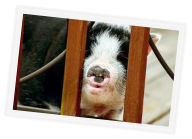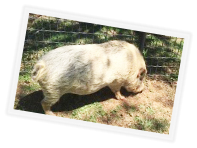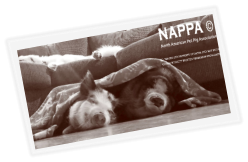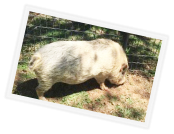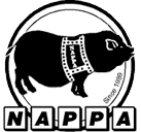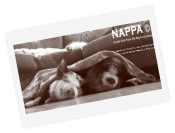BACK TO TOP
FOR MORE INFORMATION, E-MAIL: nappapignews@yahoo.com
2022-2025 Designed by: WimberlysWebWorks.com
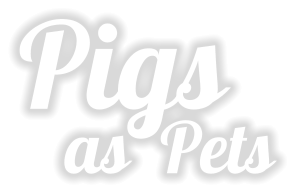
Summit Articles:
•
Miniature Pig Care Sheet
•
History Of the PotBellied Pig / Keith Connell
•
5 Important Facts to Teach Kids About Pets
•
Ways To Strengthen Bonds With A Rescue Pig
•
5 Summer Safety Tips for Pets
•
7 Reasons to Consider Adopting the Adult Pet Pig
•
Thinking About Adopting a Potbellied Pig
More articles, Please see The Pet Pig Summit Part 1 and The Pet Pig Summit Part 3
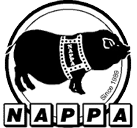


Pet Pig Summit (Part 2)
For More Articles - Please go to
THE PET PIG SUMMIT, PART 1 and THE PET PIG SUMMIT, PART 3 and The Pet Pig Summit Facebook!
Miniature Pig Care Sheet
Developed with and approved by a qualified veterinarian- Dr. John Carr BVSc, PhD, DPM, Dip ECPHM,
MRCVS:
Diet - A well balance miniature pig diet consists of:
•
High–quality potbellied food such as Dr. Cole’s mini pig feed is the best for dry skin/hooves and male
urinary tracks, Mazuri mini pig food a great potbellied pig food.
•
Washed vegetables such as cucumbers, tomatoes, zucchini, grapes, apples, and broccoli.
•
Limited amounts of fruits.
•
Clean, fresh water, changed daily.
•
Avoid snacks and foods with salt added.
•
Chewable kids vitamin without iron for ages 1- 8 years of age.
•
Men’s adult vitamin for pet pigs 8 years of age and older also good to give to female pet pigs.
•
When over 6 months of age, feed about 1% of your pigs body-weight.
Housing - The living conditions of the pet pig are left up to the pet owner to determine their family needs.
The vast majority of miniature pigs spend at least part of their day as inside house pets. Some are let
outside to go to the bathroom, to spend some time grazing and lie in the sun. Some pigs live outside all
the time and a few pigs are kept exclusively in the house with little to no outside time. Pigs are adaptable,
but they do much better if they have the same routine every day.
•
Indoor environment for your pig is one in which they are kept away from drafts and given blankets.
•
Outdoor environment for your pig living in the backyard needs fencing strong enough and high
enough to make sure the pig does not wander off. Providing your pig with shelter to protect them from
the elements and from the sun and cold.
•
Miniature pigs acclimate well to average temperatures, not to exceed 80 degrees F. Be cautious of
extreme temperature changes. Pigs should never be in direct sunlight without sunscreen or in a drafty
area.
Normal Behavior and Characteristics - Always balance consistency and variety in your relationship with
your miniature pig.
•
For consistency, you need to tell your pig “the how and where” you expect a behavior to be done.
•
Use rewards that your pig likes.
Need to Know Facts:
•
Miniature potbellied pigs don’t exist. Many pigs get turned into rescues because owners are unaware
of how big they’ll grow.
•
Potbellied pigs are extremely smart. They can be house-trained, learn tricks, and even be taught to
walk on a leash.
Potbellied pig owners should be prepared to provide:
•
Plenty of outside time and space in a secure area to exercise their natural rooting behavior. Owners
can section off part of their yard to provide rooting area, often hiding apple chunks and other yummy
treats for pigs can find.
•
Shelter & shade is required, as potbellied pigs can be sensitive to the sun. Outdoor pigs need access
to shelter at all times.
•
Regular Veterinary care.
•
Plenty of water to drink and play in. Many pigs enjoy swimming & something as simple as a child’s
swimming pool filled with a couple inches of water keeps them happy.
•
A nutritional potbellied pig feed and limited snacks and treats. Training will be easier if pigs are
motivated to work instead of getting treats for doing nothing.
History Of the Potbellied Pig / Keith Connell
When Keith Connell was in his early 20’s, he began raising rare breeds of pheasants. Five of the
varieties raised were extinct everywhere else in the world. The first year, 3 hens hatched out 25-30 eggs.
The Connell’s acquired the Crème of Barely Park which consisted of a trailer park, cabins and a
swimming pool. They added animals to the park to draw the public. There were deer, llamas, the now
thriving rare pheasants, a few wolves, and a Kilroy bear, who loved orange soda pop, preferably with
crushed ice.
For the first few years, Mr. Connell traded young pheasants for llamas, young deer for elk and so on,
always trading for bigger and better stock without having to use money. It wasn’t long before the Park
became known as the Bowmanville Zoo.
In the early 1970’s, Keith Connell traveled to Europe looking for Bactrian (2 hump) camels. He located
some beautiful bulls while at the Helzinki Zoo in Finland. While negotiating for the bulls he noticed a
crowd of people turning away from the camels and looking down a pathway. Everyone was pointing and
laughing and snapping photos. Pushing his way through the crowd to see what the fuss was about he
finally spotted … a small black sow running as fast as she could down the path ahead of him to get to the
people holding treats out for her. She didn’t get very far because 12 little piglets were more determined
than she was, and managed to knock her over so they could suckle. At that point Mr. Connell knew he
was hooked. The year was 1975.
Mr. Connell purchased 4 camels that trip, but it took many more trips over a 10-year span to import
Potbellied pigs into his Canadian Zoo. It is rumored that in the early 70’s Sweden imported one boar and
two gilts directly from Vietnam. How much European blood was mixed with that original trio of pigs is
not known because there are no records. Helzinki Zoo worked with several species, but since pigs were
not high on any priority list, no documentation was kept.
Canada, at the time, allowed pigs to be imported from Sweden, but not other European countries. The
agricultural red tape was considerable and time-consuming to complete. Mr. Connell hand-picked a
group of 18 pigs to import which were then transported to Copenhagen and from there crossed the
Atlantic to New York. Upon arrival in New York, it was discovered that no transit permit had accompanied
the shipment. Back to Copenhagen they went. One week later they arrived in New York for the 2nd time.
Legal at last. They were quarantined in New York for several days before being transported to Mirabel
Quarantine Station in Ontario, Canada. The year was 1985.
The original imports brought in by Mr. Connell consisted of 18 pigs and became known as the Connell
Line, or Con Line. There were fourteen sows: Grizzabella, Honey Bun, Karen, Gretle, Heidi, Barbi, Lucinda,
Twinkle, Prudence, Sheila (who later became Pancake), Valerie, Alisa, Claudette, and Annabel. There were
four boars: Persi, Orland, Roger and Kirby.
The foundation stock was, and continued to be, the basis from which all potbellies come today. The 18
pigs were between the ages of eight and twelve when they died. The last one to die was Annabel who
had just turned twelve. The year was 1995.
Over the last several years attitudes and expectations toward potbellies have changed. Amidst the
fractures, fragments and struggles of a small industry, many positive qualities have kicked in.
Responsibility, concern and loyalty to the breed have contributed to some success of the potbelly as a
pet. The hard work of many people promoting these animals as pets is making a difference at a grass-
roots level.
It is through the hard work of many dedicated people that summits are made possible. We are all
learning more and more about the care and management of these pigs. We are also learning there are
many questions left unanswered. Sharing health and medical information is important. So is
documentation and record-keeping. We are only now beginning to find out what the life span of these
pigs is. We certainly need to continue to address geriatrics, since we have nothing to compare to.
Medical records stored in the Swine Medical Database are a valuable resource. The more records
gathered; the more pigs will be helped in the future. On-going efforts to build the Swine Medical
Database with documented case histories will go a long way toward improving medical care, taking
advantage of different treatment protocols and saving lives of potbellies in the years to come.
Registration is equally important. Genetics can and should be tracked, birth dates documented, and
health issues cross-referenced with different bloodlines. Sometimes knowing genetic background can
enhance diagnostics. Improving record-keeping allows looking back eight generations or more to glean a
medical/health history of a particular gene pool. Even pigs of unknown breeding can be assigned a
number and be included in the tracking efforts. Statistics along with documentation of the total number
of Potbellied Pigs in the US could certainly lead to funding for research.
In summary, we have traced the Vietnamese Miniature Potbellied pig back to its origin in Asia where
they and their ancestors may have thrived for thousands of years. We have little or no documentation
on how they evolved and survived. We can only surmise that they were hardy and adaptable.
The year 2015 marked the 40th Anniversary of Keith Connell’s discovery of these unique
animals. 2015 marked the 30th Anniversary of Potbellied Pigs as Pets.
We have much to learn. We have much to do.
POT-BELLIED PIGS FLY THE OCEAN TO RAISE SMILES IN BOWMANVILLE
Keith Connell doesn't beam with pride when he looks at his newly-acquired brood of Vietnamese Pot- bellied pigs; he laughs out loud. "You just can't help but smile when you look at them," he says. "You have to wonder what the ‘big man' had in mind when he put them on this earth." The brunt of the comments are 17 young pigs Connell just brought over from Europe. "Welcome to the potbellied pig capital of Canada," he says, chasing the stubby creatures from a corner in preparation for their first photo session. In Vietnam the animals are kept as livestock and supply a major source of protein for the national diet. On this side of the Pacific Ocean and in Europe they are valued less for their meat than for their potential as zoo attractions. Their appearance is a sure-fire child pleaser - short legs, squinting eyes, large snouts, hairy coats and bare sagging bellies. Bowmanville Zoo is famous for the success of its selective breeding programs, especially with hooved animals and exotic birds. Connell plans to breed his pigs when they have grown to maturity, but before they manage to eat him out of house and home. An overweight condition ruled out breeding the pair of potbellied pigs he had five years ago. Most of the new arrivals, four males and 13 females, will find homes in other zoos. "There probably isn't a zoo in North America that won't be interested in them," Connell says. The Bowmanville porkers are also some of the best-traveled anywhere in the world. They were purchased in Northern Europe, and that is all Connell will say about their place of origin. After 10 years of trying to buy a good lot of the animals "I got awfully lucky," he says. A problem with transfer permits in New York after a flight from Stockholm resulted in the pigs being loaded back aboard a jet in their wire mesh cages and returned across the Atlantic. Later, with proper documentation, they landed back in New York and connected for a flight to Mirabel Airport in Montreal. The immigrants spent the next month in quarantine, being cared for by Canadian government veterinary staff. The final leg of their journey was a ride down Highway 401 in Cornell's truck. Having rested up from their trip, the potbellied pigs are now on view at Bowmanville Zoo. The perils aren't entirely over. It seems little potbellies are particularly sensitive, and Connell says, "We'll have to be careful to see that they don't get sunburned."
Ways To Strengthen Bonds With A Rescue Pig
According to the ASPCA, there are 1.6 million animals adopted every year in the United States. These
animals can range from young to seniors, and have all sorts of different backgrounds, and experiences.
When you decide to welcome one of these pigs into your home and have them become a part of your
family it’s wise that you do everything you can to make them feel at ease and look for ways to make an
unbreakable bond. It may be challenging at times, but it’ll be completely worth it in the end.
Here are a few ways NAPPA recommends connecting with your pet pig and making a friend for life.
More often than not, rescue pigs are coming from some unfortunate situations. Whether they’ve been
surrendered by a family who was inadequately prepared for them, or removed from unsafe or unsanitary
conditions, their trust in humans can be severely compromised. Make sure you go above and beyond to
make them feel safe with you by talking to them. You may need to start slowly and work your way up, but
they will learn to trust again.
Training is Essential: Let’s face it: when welcoming a rescue pig into your home it can be daunting at
times, especially if you’re unsure of whether or not that pet pig has had any training. Consistency is key. A
little bit can go a long way, so once your rescue masters the basic training, see how far you can challenge
them mentally. Always balance consistency and variety in your training with your pig. For consistency, you
need to tell your rescue pig how and where you expect a behavior to be done. You also need to vary when
you ask for a behavior and when you will reward them. You also need to vary which rewards are used and
how much is given. Your pig will look forward to working with you, and you will create an interest in
learning because any behavior is possible, and any number of rewards may be given.
Positive Reinforcement Is Important: It is important that you tie positive experiences with you so
that they can learn to trust you and are more willing to do what is told of your pig. Pigs respond extremely
well to treats and thrive on praise. Find what works best for your pig and praise them when they’re
displaying behavior you see acceptable and want to encourage.
Get Exercise Involved: Just like mental stimulation is imperative to building a bond and keeping pigs
(especially a rescue) that they are attentive, physical activity is something that when done together has
incredible benefits for both of you. Not only will it help keep them active, but it’ll also reduce anxiety and
help problematic behavior. You can access your exercises to both of your abilities by taking your pig for a
walk, switching it up to keep it interesting, and most importantly; have fun!
Be as Patient as Possible: Be understanding that every pig is different, and it may take your rescue
pig a little longer than others to come around. Depending on their situation, they can be a little shy and
fearful and unsure about their surroundings and family. Have faith that by investing a bit of time, effort,
and lots of love that they’ll realize their new home and family are perfect for them.
5 Summer Safety Tips for Pets
Summertime means fun, sun, and hopefully lots of play outdoors. But as much fun in the summer can
be for you and your pig, there are a few safety tips that will hopefully make the warmest of all seasons
safe and carefree for all concerned!
Here are some summer safety tips for pigs:
•
Always apply sunscreen on your pig if they spend more than just a few minutes outside every day in
the hot summer sun. The sunscreen should be fragrance-free, non-staining, and contain UA and UVB
barriers similar to sunscreens made for humans. Consult your veterinarian, but there are some
sunscreens available made specifically for pets.
•
Provide plenty of fresh water and plenty of Shade. Dehydration in pigs is a real possibility during the
summer, especially if your pig is outside for extended periods without drinking sufficient water. Give
your pig plenty of fresh water in the shade.
•
Don’t leave your pet pig in the car. You may think leaving your pig in a car for only a few minutes is
no big deal, but it can quickly lead to heat strokes in pigs. In bright sunshine your car becomes hotter
inside than outside air.
•
Watch for Unknown Grassy Knolls. Pigs love to investigate grassy areas. But did you know many
lawns are treated with fertilizers and pesticides during the summer? Remember, not all grass is created
equal.
•
Avoid Antifreeze! Even though antifreeze is something to watch out for year round, cars tend to
overheat and leak antifreeze during the summer. Pet pigs find it delicious and even in very small
amounts, antifreeze is poisonous to pigs.
5 Important Facts to Teach Kids About Pet Ownership - According to a Central
Penn Parent
Kids instinctively love animals. Children begin learning about animal species, their habitats and
behavior during elementary school, and this is when children also become more interested and involved
in caring for family pets. They may even become pet owners for the first time at an early age. Learning
about animal care is fun for kids, about empathy, compassion and responsibility.
Here are five important facts that children need to know about pet care:
•
All pets need water: Water is essential for every pet, every day (some even live in water). Keep water
dishes or bottles clean so their water is always good to drink.
•
Pets need particular food: Retail stores or feed stores are a great place to find the right food for any
pet. While some eat fresh vegetables, like you, most pets don’t thrive on people food. Feeding scraps from
your plate is not a good idea, as some food might be bad for them.
•
Each pet needs a different habitat: While cats or dogs and others share our homes, a few require
special houses. Fish need aquarium with water that filtered, at the correct temperature. Smaller pets need
cages, they’re not litter- trained, and they’re small enough to get lost in your house. Birds need cages to
prevent them from escaping. Whatever habitat your pet requires, it’s important to keep it clean and give
them toys to entertain them.
•
Pets need socializing: Just like people, pets can get lonely. Dogs need lots of human time. While cats
seem like loners, they’re actually social. Fish, gerbils or pet pigs are more content with the presence of an
animal of the same species. Adopting two pets together can prevent loneliness.
•
Just like you, pets need check- ups: Finally, most pets need regular check–ups. Vet visits can be costly,
so before becoming a pet owner, make sure you’re prepared. Pet ownership is a serious responsibility- the
health and care is now up to you.
Understanding these important facts about pet care for each type of animal can help every family find
the right pet.
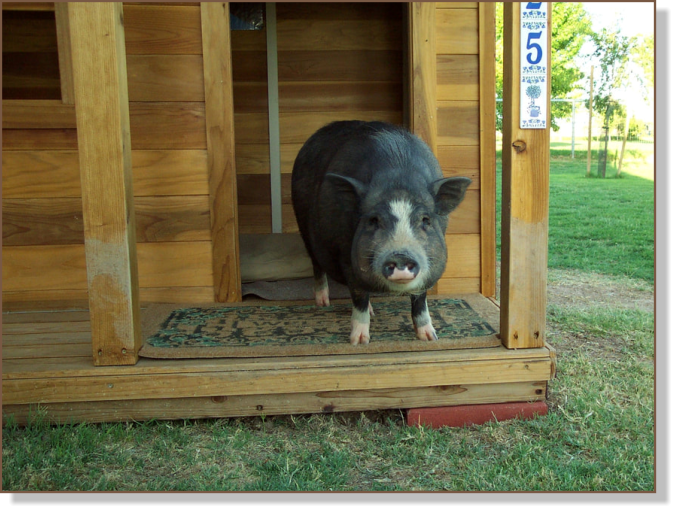
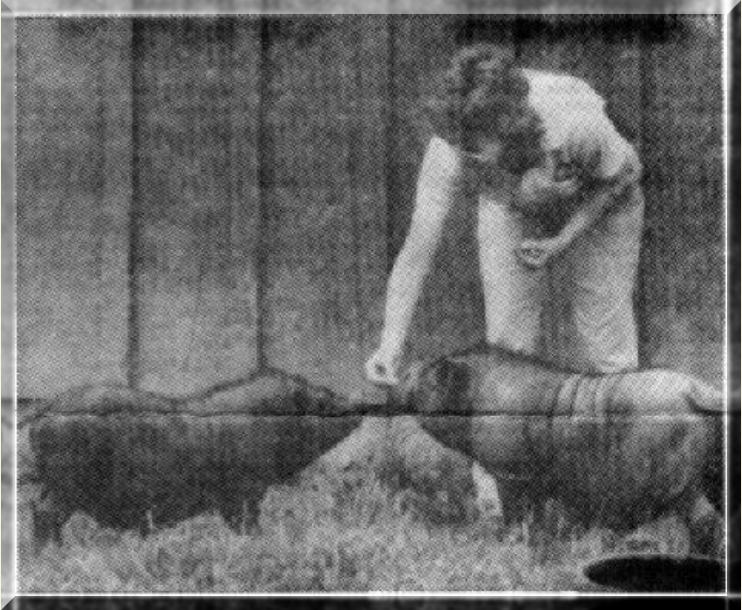
HOG WILD - - - THE ZOO'S NEW VIETNAMESE PIGS ARE 'SO UGLY, THEY'RE CUTE' ~ By Robin
Garr
They squeak like a child's squeeze toy. Their flabby bellies almost drag on the ground. Their wagging tails lack the traditional curl, and they have squashed-in faces that only a mother could love. A mother pig at that. But keepers at the Louisville Zoo say the zoo's four new Vietnamese potbellied pigs -- yes, that's the name -- are drawing crowds of spectators who seem to find the wrinkled little beasts adorable. “They're so ugly, they're cute," said Mary T. Duane, the zoo's director of external affairs. "Some people think they're miniature rhinos." Part of the appeal of the animals may be their small size, said Val Haft, small-animal-area keeper in charge of the pig's quarters. The 7-month-old pigs are close to their adult weight of 60 to 70 pounds -- only about one-tenth the size of mature domestic swine. Some find them curious because, although they are common in the jungles and farmyards of their native Southeast Asia and have been displayed in some zoos in Europe and Canada, the species hasn't been seen in U.S. zoos until now. Under special dispensation from federal regulations that strictly limit swine imports, the Louisville Zoo and four other zoos in this country received colonies of the animals in February. The Louisville Zoo purchased its four from the Bowmanville Zoo in Ontario, Canada. Because the tropical species don't thrive in temperatures below 60 degrees, the four (Wilbur, Homer, Bonnie and Lulu) weren't put on display until recently. Now they're in a grassy enclosure in the zoo's small- animal area, where petting is allowed. The Vietnamese pigs, like domestic swine, will eat just about anything placed before them, Haft said. Until a feeder for wandering turkeys was moved out of the pig pen, she said, the greediest of the group was getting overweight from pigging out on bird seed. With that temptation removed, the quartet seems to be thriving on a mixture of commercial pig chow, apples, sweet potatoes, tomatoes and carrots. The pigs require some care in addition to being fed and kept warm, Haft said. Their sparsely haired hides sunburn easily, so it's sometimes necessary to run them inside at midday. Keepers must squirt their backs with mineral oil several times a week to help keep their skin from drying out. Like domestic pigs, the Vietnamese oinkers roll in the mud to stay cool, but they're clean and almost odor-free. Their mud wallow is limited to a back corner of the enclosure, Haft said, "so they won't root up the whole pen." Now that the pigs are almost mature, it probably won't be long before the enclosure is filled with the pitter-patter of little pig feet, Haft said. The animal's gestation period is less than four months, so litters of Vietnamese potbellied piglets are expected by fall. Because demand for the species is increasing in this country, the Louisville Zoo probably would sell or trade the piglets to other zoos, Haft said. "We like to have them because we didn't have any swine before," she said. "And they're just plain cute," Duane said. "Apparently everybody enjoys the oddity of a petite little pig. And they're so friendly - - - they'll come right over and let you pet them."
7 Reasons to Consider Adopting the Adult Pet Pig
As pet pigs are becoming widely accepted as pets, many towns, cities, and municipalities throughout
the United States have enacted laws, ordinances and regulations to permit the keeping of potbellied pigs
as pets. NAPPA is encouraging potential pig owners to adopt ADULT PIGS from pig rescues.
Seven Great Reasons to Open Your Heart to an Adult Pet Pig
1.
Adult pigs are less destructive. Most adult adoptive pigs are well past the search and destroy phase.
2.
What you see is what you get. An adult pig holds no surprise as how big they might get.
3.
You can teach an older pig new tricks. Adult pigs are more attentive than piglets, and more eager to
please their families.
4.
Adult pigs are great company for senior citizens.
5.
Adult pigs are relaxing to hang out with. They have all the basics down and aren’t full of energy to
burn.
6.
Adopted pigs are grateful for your kindness. Somehow, adult pigs know you gave them a home
when no one else would. Many new owners form a bond very quickly with their adult pet pigs.
7.
You can be a hero to a deserving pig. Almost without exception, people who adopt adult pigs feel a
special sense of pride and purpose in opening their heart to a hard-to-place pet pig. Doing a good thing
really makes you feel good!
Thinking About Adopting a Potbellied Pig
So, you are thinking about letting a potbellied pig join your family, but you’re aren’t sure
whether to buy or adopt. NAPPA asks you to please adopt, and here’s why!
Sadly, there are so many potbellied pigs that are abandoned or surrendered since there aren’t laws to
protect potbellied pigs like there are for dogs and cats, abuse is very common. There are literally large
amounts of potbellied pigs that are displaced and now live in rescues and sanctuaries. Many dedicated
potbellied pig organizations do not adopt potbellied pigs and do not support pet stores who do because
they are often irresponsible of who they sell to.
Many pet stores will sell to anyone as long as they are over 18 years of age. Sadly, many people do not
do their research before buying a potbellied pig and soon realize they are a lot more work than they
thought, or their area law prohibits potbellied pigs. This results in many pigs being abandoned on the
streets and becoming part of the already large-unwanted pig population.
Potbellied pigs that come from a rescue or sanctuary, with the right TLC, are wonderful pet pigs to
responsible owners. If you are considering buying a pig because you want a piglet, remember there are
many potbellied pigs of all ages available for adoption at rescues and sanctuaries. It is possible to adopt a
piglet, because many times rescues and sanctuaries get pregnant potbellied pigs and later need homes
for piglets, you just need to keep checking back or ask multiple rescue sanctuaries. It takes effort, but it’s
the right thing to do.
BACK TO TOP
FOR MORE INFORMATION,
E-MAIL: nappapignews@yahoo.com
2022-2025 Designed by: WimberlysWebWorks.com
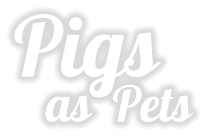
Summit Articles:
•
Miniature Pig Care Sheet
•
History Of the PotBellied Pig / Keith Connell
•
5 Important Facts to Teach Kids About Pets
•
Ways To Strengthen Bonds With A Rescue Pig
•
5 Summer Safety Tips for Pets
•
7 Reasons to Consider Adopting the Adult Pet Pig
•
Thinking About Adopting a Potbellied Pig
More articles, Please see The Pet Pig Summit Part
1 and The Pet Pig Summit Part 3












Pet Pig Summit
(Part 2)
For More Articles - Please go to
THE PET PIG SUMMIT, PART 1 and THE PET PIG SUMMIT, PART 3 and The Pet Pig Summit Facebook!
Miniature Pig Care Sheet
Developed with and approved by a qualified
veterinarian- Dr. John Carr BVSc, PhD, DPM, Dip
ECPHM, MRCVS:
Diet - A well balance miniature pig diet consists of:
•
High–quality potbellied food such as Dr. Cole’s
mini pig feed is the best for dry skin/hooves and
male urinary tracks, Mazuri mini pig food a great
potbellied pig food.
•
Washed vegetables such as cucumbers,
tomatoes, zucchini, grapes, apples, and broccoli.
•
Limited amounts of fruits.
•
Clean, fresh water, changed daily.
•
Avoid snacks and foods with salt added.
•
Chewable kids vitamin without iron for ages 1-
8 years of age.
•
Men’s adult vitamin for pet pigs 8 years of age
and older also good to give to female pet pigs.
•
When over 6 months of age, feed about 1% of
your pigs body-weight.
Housing - The living conditions of the pet pig are
left up to the pet owner to determine their family
needs. The vast majority of miniature pigs spend at
least part of their day as inside house pets. Some
are let outside to go to the bathroom, to spend
some time grazing and lie in the sun. Some pigs live
outside all the time and a few pigs are kept
exclusively in the house with little to no outside
time. Pigs are adaptable, but they do much better if
they have the same routine every day.
•
Indoor environment for your pig is one in which
they are kept away from drafts and given blankets.
•
Outdoor environment for your pig living in the
backyard needs fencing strong enough and high
enough to make sure the pig does not wander off.
Providing your pig with shelter to protect them from
the elements and from the sun and cold.
•
Miniature pigs acclimate well to average
temperatures, not to exceed 80 degrees F. Be
cautious of extreme temperature changes. Pigs
should never be in direct sunlight without sunscreen
or in a drafty area.
Normal Behavior and Characteristics - Always
balance consistency and variety in your relationship
with your miniature pig.
•
For consistency, you need to tell your pig “the
how and where” you expect a behavior to be done.
•
Use rewards that your pig likes.
Need to Know Facts:
•
Miniature potbellied pigs don’t exist. Many pigs
get turned into rescues because owners are
unaware of how big they’ll grow.
•
Potbellied pigs are extremely smart. They can
be house-trained, learn tricks, and even be taught to
walk on a leash.
Potbellied pig owners should be prepared to
provide:
•
Plenty of outside time and space in a secure
area to exercise their natural rooting behavior.
Owners can section off part of their yard to provide
rooting area, often hiding apple chunks and other
yummy treats for pigs can find.
•
Shelter & shade is required, as potbellied pigs
can be sensitive to the sun. Outdoor pigs need
access to shelter at all times.
•
Regular Veterinary care.
•
Plenty of water to drink and play in. Many pigs
enjoy swimming & something as simple as a child’s
swimming pool filled with a couple inches of water
keeps them happy.
•
A nutritional potbellied pig feed and limited
snacks and treats. Training will be easier if pigs are
motivated to work instead of getting treats for doing
nothing.

History Of the Potbellied Pig / Keith
Connell
When Keith Connell was in his early 20’s, he
began raising rare breeds of pheasants. Five of the
varieties raised were extinct everywhere else in the
world. The first year, 3 hens hatched out 25-30
eggs.
The Connell’s acquired the Crème of Barely Park
which consisted of a trailer park, cabins and a
swimming pool. They added animals to the park to
draw the public. There were deer, llamas, the now
thriving rare pheasants, a few wolves, and a Kilroy
bear, who loved orange soda pop, preferably with
crushed ice.
For the first few years, Mr. Connell traded young
pheasants for llamas, young deer for elk and so on,
always trading for bigger and better stock without
having to use money. It wasn’t long before the Park
became known as the Bowmanville Zoo.
In the early 1970’s, Keith Connell traveled to
Europe looking for Bactrian (2 hump) camels. He
located some beautiful bulls while at the Helzinki
Zoo in Finland. While negotiating for the bulls he
noticed a crowd of people turning away from the
camels and looking down a pathway. Everyone was
pointing and laughing and snapping photos.
Pushing his way through the crowd to see what the
fuss was about he finally spotted … a small black
sow running as fast as she could down the path
ahead of him to get to the people holding treats
out for her. She didn’t get very far because 12 little
piglets were more determined than she was, and
managed to knock her over so they could suckle.
At that point Mr. Connell knew he was hooked. The
year was 1975.
Mr. Connell purchased 4 camels that trip, but it
took many more trips over a 10-year span to
import Potbellied pigs into his Canadian Zoo. It is
rumored that in the early 70’s Sweden imported
one boar and two gilts directly from Vietnam. How
much European blood was mixed with that original
trio of pigs is not known because there are no
records. Helzinki Zoo worked with several species,
but since pigs were not high on any priority list, no
documentation was kept.
Canada, at the time, allowed pigs to be imported
from Sweden, but not other European countries.
The agricultural red tape was considerable and
time-consuming to complete. Mr. Connell hand-
picked a group of 18 pigs to import which were
then transported to Copenhagen and from there
crossed the Atlantic to New York. Upon arrival in
New York, it was discovered that no transit permit
had accompanied the shipment. Back to
Copenhagen they went. One week later they
arrived in New York for the 2nd time. Legal at last.
They were quarantined in New York for several
days before being transported to Mirabel
Quarantine Station in Ontario, Canada. The year
was 1985.
The original imports brought in by Mr. Connell
consisted of 18 pigs and became known as the
Connell Line, or Con Line. There were fourteen
sows: Grizzabella, Honey Bun, Karen, Gretle, Heidi,
Barbi, Lucinda, Twinkle, Prudence, Sheila (who
later became Pancake), Valerie, Alisa, Claudette,
and Annabel. There were four boars: Persi, Orland,
Roger and Kirby.
The foundation stock was, and continued to be,
the basis from which all potbellies come today. The
18 pigs were between the ages of eight and twelve
when they died. The last one to die was Annabel
who had just turned twelve. The year was 1995.
Over the last several years attitudes and
expectations toward potbellies have changed.
Amidst the fractures, fragments and struggles of a
small industry, many positive qualities have kicked
in. Responsibility, concern and loyalty to the breed
have contributed to some success of the potbelly
as a pet. The hard work of many people promoting
these animals as pets is making a difference at a
grass-roots level.
It is through the hard work of many dedicated
people that summits are made possible. We are all
learning more and more about the care and
management of these pigs. We are also learning
there are many questions left unanswered. Sharing
health and medical information is important. So is
documentation and record-keeping. We are only
now beginning to find out what the life span of
these pigs is. We certainly need to continue to
address geriatrics, since we have nothing to
compare to.
Medical records stored in the Swine Medical
Database are a valuable resource. The more
records gathered; the more pigs will be helped in
the future. On-going efforts to build the Swine
Medical Database with documented case histories
will go a long way toward improving medical care,
taking advantage of different treatment protocols
and saving lives of potbellies in the years to come.
Registration is equally important. Genetics can
and should be tracked, birth dates documented,
and health issues cross-referenced with different
bloodlines. Sometimes knowing genetic
background can enhance diagnostics. Improving
record-keeping allows looking back eight
generations or more to glean a medical/health
history of a particular gene pool. Even pigs of
unknown breeding can be assigned a number and
be included in the tracking efforts. Statistics along
with documentation of the total number of
Potbellied Pigs in the US could certainly lead to
funding for research.
In summary, we have traced the Vietnamese
Miniature Potbellied pig back to its origin in Asia
where they and their ancestors may have thrived
for thousands of years. We have little or no
documentation on how they evolved and survived.
We can only surmise that they were hardy and
adaptable.
The year 2015 marked the 40th Anniversary
of Keith Connell’s discovery of these unique
animals. 2015 marked the 30th Anniversary of
Potbellied Pigs as Pets.
We have much to learn. We have much to do.
POT-BELLIED PIGS FLY THE OCEAN TO RAISE
SMILES IN BOWMANVILLE
Keith Connell doesn't beam with pride when he looks at his newly-acquired brood of Vietnamese Pot-bellied pigs; he laughs out loud. "You just can't help but smile when you look at them," he says. "You have to wonder what the ‘big man' had in mind when he put them on this earth." The brunt of the comments are 17 young pigs Connell just brought over from Europe. "Welcome to the potbellied pig capital of Canada," he says, chasing the stubby creatures from a corner in preparation for their first photo session. In Vietnam the animals are kept as livestock and supply a major source of protein for the national diet. On this side of the Pacific Ocean and in Europe they are valued less for their meat than for their potential as zoo attractions. Their appearance is a sure-fire child pleaser - short legs, squinting eyes, large snouts, hairy coats and bare sagging bellies. Bowmanville Zoo is famous for the success of its selective breeding programs, especially with hooved animals and exotic birds. Connell plans to breed his pigs when they have grown to maturity, but before they manage to eat him out of house and home. An overweight condition ruled out breeding the pair of potbellied pigs he had five years ago. Most of the new arrivals, four males and 13 females, will find homes in other zoos. "There probably isn't a zoo in North America that won't be interested in them," Connell says. The Bowmanville porkers are also some of the best-traveled anywhere in the world. They were purchased in Northern Europe, and that is all Connell will say about their place of origin. After 10 years of trying to buy a good lot of the animals "I got awfully lucky," he says. A problem with transfer permits in New York after a flight from Stockholm resulted in the pigs being loaded back aboard a jet in their wire mesh cages and returned across the Atlantic. Later, with proper documentation, they landed back in New York and connected for a flight to Mirabel Airport in Montreal. The immigrants spent the next month in quarantine, being cared for by Canadian government veterinary staff. The final leg of their journey was a ride down Highway 401 in Cornell's truck. Having rested up from their trip, the potbellied pigs are now on view at Bowmanville Zoo. The perils aren't entirely over. It seems little potbellies are particularly sensitive, and Connell says, "We'll have to be careful to see that they don't get sunburned."
Ways To Strengthen Bonds With A
Rescue Pig
According to the ASPCA, there are 1.6 million
animals adopted every year in the United States.
These animals can range from young to seniors,
and have all sorts of different backgrounds, and
experiences. When you decide to welcome one of
these pigs into your home and have them become
a part of your family it’s wise that you do
everything you can to make them feel at ease and
look for ways to make an unbreakable bond. It
may be challenging at times, but it’ll be completely
worth it in the end.
Here are a few ways NAPPA recommends
connecting with your pet pig and making a friend
for life. More often than not, rescue pigs are
coming from some unfortunate situations.
Whether they’ve been surrendered by a family who
was inadequately prepared for them, or removed
from unsafe or unsanitary conditions, their trust in
humans can be severely compromised. Make sure
you go above and beyond to make them feel safe
with you by talking to them. You may need to start
slowly and work your way up, but they will learn to
trust again.
Training is Essential: Let’s face it: when
welcoming a rescue pig into your home it can be
daunting at times, especially if you’re unsure of
whether or not that pet pig has had any training.
Consistency is key. A little bit can go a long way, so
once your rescue masters the basic training, see
how far you can challenge them mentally. Always
balance consistency and variety in your training
with your pig. For consistency, you need to tell
your rescue pig how and where you expect a
behavior to be done. You also need to vary when
you ask for a behavior and when you will reward
them. You also need to vary which rewards are
used and how much is given. Your pig will look
forward to working with you, and you will create an
interest in learning because any behavior is
possible, and any number of rewards may be
given.
Positive Reinforcement Is Important: It is
important that you tie positive experiences with
you so that they can learn to trust you and are
more willing to do what is told of your pig. Pigs
respond extremely well to treats and thrive on
praise. Find what works best for your pig and
praise them when they’re displaying behavior you
see acceptable and want to encourage.
Get Exercise Involved: Just like mental
stimulation is imperative to building a bond and
keeping pigs (especially a rescue) that they are
attentive, physical activity is something that when
done together has incredible benefits for both of
you. Not only will it help keep them active, but it’ll
also reduce anxiety and help problematic
behavior. You can access your exercises to both of
your abilities by taking your pig for a walk,
switching it up to keep it interesting, and most
importantly; have fun!
Be as Patient as Possible: Be understanding
that every pig is different, and it may take your
rescue pig a little longer than others to come
around. Depending on their situation, they can be
a little shy and fearful and unsure about their
surroundings and family. Have faith that by
investing a bit of time, effort, and lots of love that
they’ll realize their new home and family are
perfect for them.
5 Summer Safety Tips for Pets
Summertime means fun, sun, and hopefully lots
of play outdoors. But as much fun in the summer
can be for you and your pig, there are a few safety
tips that will hopefully make the warmest of all
seasons safe and carefree for all concerned!
Here are some summer safety tips for pigs:
•
Always apply sunscreen on your pig if they
spend more than just a few minutes outside every
day in the hot summer sun. The sunscreen should
be fragrance-free, non-staining, and contain UA
and UVB barriers similar to sunscreens made for
humans. Consult your veterinarian, but there are
some sunscreens available made specifically for
pets.
•
Provide plenty of fresh water and plenty of
Shade. Dehydration in pigs is a real possibility
during the summer, especially if your pig is outside
for extended periods without drinking sufficient
water. Give your pig plenty of fresh water in the
shade.
•
Don’t leave your pet pig in the car. You may
think leaving your pig in a car for only a few
minutes is no big deal, but it can quickly lead to
heat strokes in pigs. In bright sunshine your car
becomes hotter inside than outside air.
•
Watch for Unknown Grassy Knolls. Pigs love to
investigate grassy areas. But did you know many
lawns are treated with fertilizers and pesticides
during the summer? Remember, not all grass is
created equal.
•
Avoid Antifreeze! Even though antifreeze is
something to watch out for year round, cars tend
to overheat and leak antifreeze during the
summer. Pet pigs find it delicious and even in very
small amounts, antifreeze is poisonous to pigs.
5 Important Facts to Teach Kids About
Pet Ownership - According to a Central
Penn Parent
Kids instinctively love animals. Children begin
learning about animal species, their habitats and
behavior during elementary school, and this is
when children also become more interested and
involved in caring for family pets. They may even
become pet owners for the first time at an early
age. Learning about animal care is fun for kids,
about empathy, compassion and responsibility.
Here are five important facts that children
need to know about pet care:
•
All pets need water: Water is essential for
every pet, every day (some even live in water).
Keep water dishes or bottles clean so their water is
always good to drink.
•
Pets need particular food: Retail stores or feed
stores are a great place to find the right food for
any pet. While some eat fresh vegetables, like you,
most pets don’t thrive on people food. Feeding
scraps from your plate is not a good idea, as some
food might be bad for them.
•
Each pet needs a different habitat: While cats
or dogs and others share our homes, a few require
special houses. Fish need aquarium with water
that filtered, at the correct temperature. Smaller
pets need cages, they’re not litter- trained, and
they’re small enough to get lost in your house.
Birds need cages to prevent them from escaping.
Whatever habitat your pet requires, it’s important
to keep it clean and give them toys to entertain
them.
•
Pets need socializing: Just like people, pets can
get lonely. Dogs need lots of human time. While
cats seem like loners, they’re actually social. Fish,
gerbils or pet pigs are more content with the
presence of an animal of the same species.
Adopting two pets together can prevent loneliness.
•
Just like you, pets need check- ups: Finally,
most pets need regular check–ups. Vet visits can
be costly, so before becoming a pet owner, make
sure you’re prepared. Pet ownership is a serious
responsibility- the health and care is now up to
you.
Understanding these important facts about pet
care for each type of animal can help every family
find the right pet.


HOG WILD - - - THE ZOO'S NEW VIETNAMESE
PIGS ARE 'SO UGLY, THEY'RE CUTE' ~ By
Robin Garr
They squeak like a child's squeeze toy. Their flabby bellies almost drag on the ground. Their wagging tails lack the traditional curl, and they have squashed-in faces that only a mother could love. A mother pig at that. But keepers at the Louisville Zoo say the zoo's four new Vietnamese potbellied pigs -- yes, that's the name -- are drawing crowds of spectators who seem to find the wrinkled little beasts adorable. “They're so ugly, they're cute," said Mary T. Duane, the zoo's director of external affairs. "Some people think they're miniature rhinos." Part of the appeal of the animals may be their small size, said Val Haft, small-animal-area keeper in charge of the pig's quarters. The 7-month-old pigs are close to their adult weight of 60 to 70 pounds -- only about one-tenth the size of mature domestic swine. Some find them curious because, although they are common in the jungles and farmyards of their native Southeast Asia and have been displayed in some zoos in Europe and Canada, the species hasn't been seen in U.S. zoos until now. Under special dispensation from federal regulations that strictly limit swine imports, the Louisville Zoo and four other zoos in this country received colonies of the animals in February. The Louisville Zoo purchased its four from the Bowmanville Zoo in Ontario, Canada. Because the tropical species don't thrive in temperatures below 60 degrees, the four (Wilbur, Homer, Bonnie and Lulu) weren't put on display until recently. Now they're in a grassy enclosure in the zoo's small-animal area, where petting is allowed. The Vietnamese pigs, like domestic swine, will eat just about anything placed before them, Haft said. Until a feeder for wandering turkeys was moved out of the pig pen, she said, the greediest of the group was getting overweight from pigging out on bird seed. With that temptation removed, the quartet seems to be thriving on a mixture of commercial pig chow, apples, sweet potatoes, tomatoes and carrots. The pigs require some care in addition to being fed and kept warm, Haft said. Their sparsely haired hides sunburn easily, so it's sometimes necessary to run them inside at midday. Keepers must squirt their backs with mineral oil several times a week to help keep their skin from drying out. Like domestic pigs, the Vietnamese oinkers roll in the mud to stay cool, but they're clean and almost odor-free. Their mud wallow is limited to a back corner of the enclosure, Haft said, "so they won't root up the whole pen." Now that the pigs are almost mature, it probably won't be long before the enclosure is filled with the pitter-patter of little pig feet, Haft said. The animal's gestation period is less than four months, so litters of Vietnamese potbellied piglets are expected by fall. Because demand for the species is increasing in this country, the Louisville Zoo probably would sell or trade the piglets to other zoos, Haft said. "We like to have them because we didn't have any swine before," she said. "And they're just plain cute," Duane said. "Apparently everybody enjoys the oddity of a petite little pig. And they're so friendly - - - they'll come right over and let you pet them."
7 Reasons to Consider Adopting the
Adult Pet Pig
As pet pigs are becoming widely accepted as
pets, many towns, cities, and municipalities
throughout the United States have enacted laws,
ordinances and regulations to permit the keeping
of potbellied pigs as pets. NAPPA is encouraging
potential pig owners to adopt ADULT PIGS from pig
rescues.
Seven Great Reasons to Open Your Heart to an
Adult Pet Pig
1.
Adult pigs are less destructive. Most adult
adoptive pigs are well past the search and destroy
phase.
2.
What you see is what you get. An adult pig
holds no surprise as how big they might get.
3.
You can teach an older pig new tricks. Adult
pigs are more attentive than piglets, and more
eager to please their families.
4.
Adult pigs are great company for senior
citizens.
5.
Adult pigs are relaxing to hang out with. They
have all the basics down and aren’t full of energy to
burn.
6.
Adopted pigs are grateful for your kindness.
Somehow, adult pigs know you gave them a home
when no one else would. Many new owners form a
bond very quickly with their adult pet pigs.
7.
You can be a hero to a deserving pig. Almost
without exception, people who adopt adult pigs feel
a special sense of pride and purpose in opening
their heart to a hard-to-place pet pig. Doing a good
thing really makes you feel good!
Thinking About Adopting a Potbellied
Pig
So, you are thinking about letting a potbellied
pig join your family, but you’re aren’t sure
whether to buy or adopt. NAPPA asks you to
please adopt, and here’s why!
Sadly, there are so many potbellied pigs that are
abandoned or surrendered since there aren’t laws
to protect potbellied pigs like there are for dogs
and cats, abuse is very common. There are literally
large amounts of potbellied pigs that are displaced
and now live in rescues and sanctuaries. Many
dedicated potbellied pig organizations do not adopt
potbellied pigs and do not support pet stores who
do because they are often irresponsible of who
they sell to.
Many pet stores will sell to anyone as long as
they are over 18 years of age. Sadly, many people
do not do their research before buying a potbellied
pig and soon realize they are a lot more work than
they thought, or their area law prohibits potbellied
pigs. This results in many pigs being abandoned on
the streets and becoming part of the already large-
unwanted pig population.
Potbellied pigs that come from a rescue or
sanctuary, with the right TLC, are wonderful pet
pigs to responsible owners. If you are considering
buying a pig because you want a piglet, remember
there are many potbellied pigs of all ages available
for adoption at rescues and sanctuaries. It is
possible to adopt a piglet, because many times
rescues and sanctuaries get pregnant potbellied
pigs and later need homes for piglets, you just need
to keep checking back or ask multiple rescue
sanctuaries. It takes effort, but it’s the right thing to
do.
